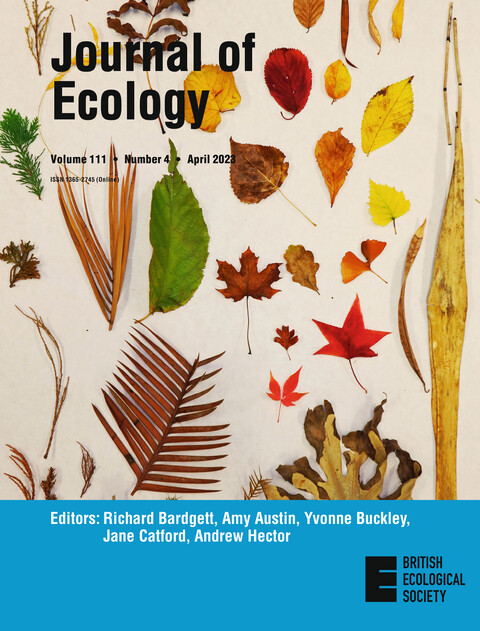The cover image for our April issue shows dried, freshly senesced leaves and foliated twigs of different gymnosperm and angiosperm species, demonstrating the size and shape of leaf litter particles. This image relates to the article ‘Experimental evidence that leaf litter decomposability and flammability are decoupled across gymnosperm species‘ by Shudong Zhang et al. Here, Shudong tells us the story behind the image:
The ‘size and shape spectrum’ (SSS), comprising litter particle size and shape and their consequent effect on fuel bed structure and aeration, is linked with interspecific variation in flammability parameters. When investigating traits in SSS, current research mainly focuses on the ‘size’ part. The ‘shape’ part is more or less missing, especially when it comes to the 3D structure of litter.
While working on our manuscript back in October 2021, we were initially only focused on the ‘size’ part of leaf litter. To attempt to quantify the complexity of the litter particle, we decided to make a scoring system, which I began constructing in my mind every day. Because it was already late autumn, Amsterdam turned into a colourful world, and my daily cycling route to Vrije Universiteit Amsterdam (VU) passes through a forest (Amsterdam Bos). On my way to VU, I collected some freshly senesced leaves and foliated twigs of different shapes and colours. Together with the litter samples we collected for our experiment, I formed a colourful ‘litter bank’ with various shapes. I laid some of them on white absorbent paper, then took this picture. Inspired by the image, we created a cumulative shape scoring system (please see Fig. S2 in our paper). Using this system, we quantified the complexity of litter particle shape as the shape index.

We believe that this shape index could be an important supplement to the SSS traits, especially, when related to litter packing on the forest floor. However, our scoring system for the shape index is just a simple start. It may still be fine-tuned by testing it on different plant groups, e.g. across diverse angiosperms (although there are many angiosperm leaves in the picture, our study only focused on the gymnosperms, but our scoring system did consider angiosperms as well). With further improvement and expansion of the leaf shape database, we hope this trait could become even more useful in predicting field litter bed packing and flammability. But also to predict other important ecological functions, for instance how different litter layers with different litter shapes and different packing ratios can host different invertebrate communities.
